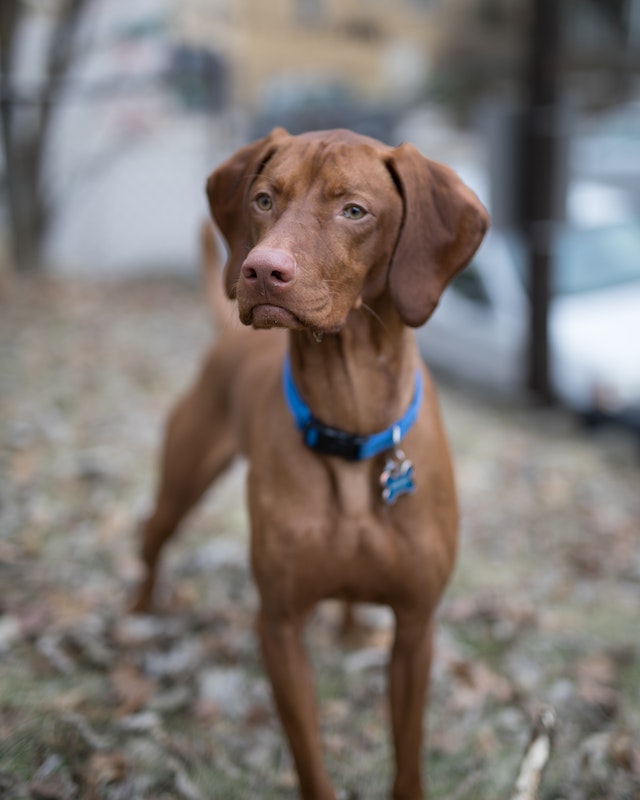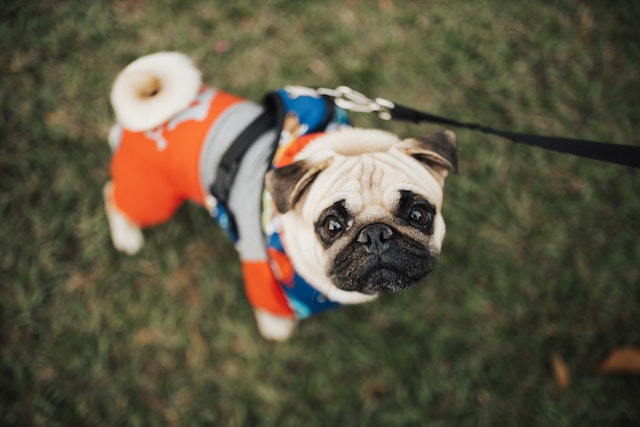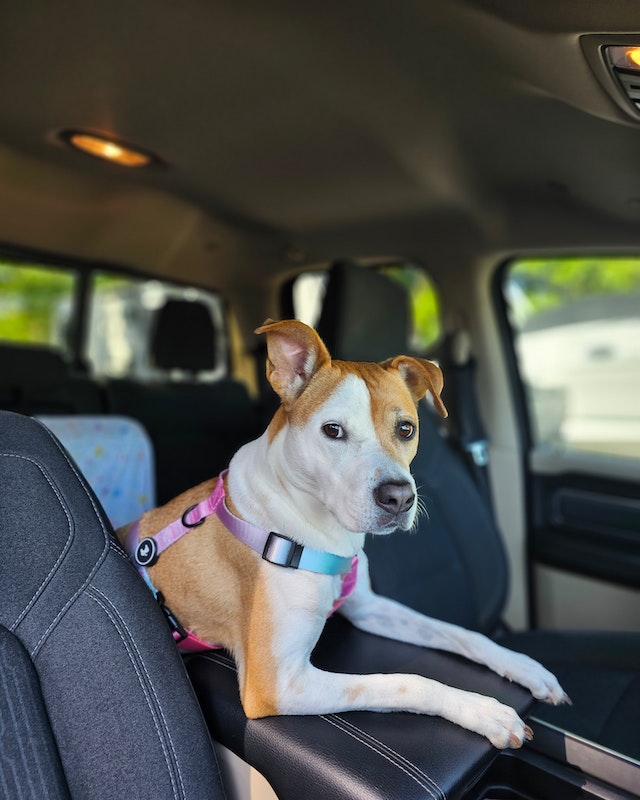7 Tips for Stopping Your Dog from Getting Lost
Posted: 09/20/2023 | BY: Jenna Bruce | Categories: Dog , Top Tips
According to American Humane, each year in the US, 10 million pets are lost, with millions of those ending up in animal shelters. Sadly, only 15% of dogs in these shelters without ID tags or microchips will ever be reunited with their families. With this in mind, we wanted to share 7 tips for stopping your dog from getting lost.

Key Points
- One of the most important things you can do to keep your pup safe is secure your property.
- A properly fitted dog collar is essential with an ID tag attached. Be sure to keep your contact information up-to-date if you move.
- Train your dog to not only sit and stay, but to also stop running, turn around and come back to you.
- Microchipping is a great backup to dog ID tags and one way families can be reunited with their fur babies.
Secure Your Property
Step one in ensuring your pup never gets out and lost is to secure your property both inside and out. It’s best to have a fenced-in backyard where your pup can safely play and use the potty. Be sure to regularly check your fence and gates for any points of escape such as loose boards or gaps. If your dog is a digger, you may need to place sandbags or cement pavers around the perimeter.
Be certain all doors and windows have proper latches and locks. In the summer, use double-ply window screens and be sure your screen doors are safely latched.
Properly ID Your Pup
It’s imperative that your dog has a properly fitting collar with an ID tag. Most pet stores sell these tags for very little. Check your dog’s ID tag a couple of times a year to make certain your contact information is still clearly legible. If it’s not, have a new one made. If you move or get a new phone number, be sure to create a new tag with the right information. Don’t put this step off. Dogs can become easily lost when in a new neighborhood, country or state. If you move, make updating their ID tag a priority.

Consider Microchipping
Microchips are housed in a special glass cylinder that is about the size of a grain of rice. When a scanner is waived over the chip, it transmits a unique identification number of the pet, which then connects to your contact information.
If you have an ID tag, why is a microchip necessary? When dogs are lost they often lose their collars. Microchips are a great backup, ensuring if someone finds them, you will be contacted. And, as with your pup’s ID tag, remember to update the contact information on your microchip should you move.
Always Leash Your Pup
Some pup parents scoff at the idea of having their dog on a leash for walks, at the dog park, on hikes or even in their own (unfenced) backyard. They believe they know their dog well and trust he or she would never just run off. Sadly, dogs can easily become engaged with squirrels, stray cats and other dogs and, before you know it, they are running at full pace away from you.
Keep your dog safe by having them on lead at all times, unless the area is safely fenced. Also, use the proper leash. A tiny pug may be fine on a retractable leash but good luck trying to control a large German Shepherd on one of those. And finally, consider using a properly fitting harness on walks and hikes. Dogs can easily squirm out of collars when they become excited and want to chase after something. A properly-fitting harness will ensure they can’t get away from you.

Train Your Dog
Should your dog escape and take off running, you can bet you’ll never be able to catch him. Dogs will win the race every time. Your best bet is to train your dog to stop and come back to you. Use a command word that your dog will recognize as something positive. It may be as simple as training them to know when you say “Treat!” to come back to you. Now the treats you give during training have to be the BEST treats ever and only given when that word is used. Think from your dog’s point of view: if he has the option to chase a rabbit or come get a ho-hum treat from you, which is he going to pick? Make the reward awesome so your dog will stop, turn around and run back no matter what.
Spay or Neuter Your Pets
Not only is spaying and neutering important to reduce the pet population in need of homes, it can also keep your pet safe. Intact male and female animals are far more apt to try and escape home in search of a mating partner. Male dogs can smell a female dog in heat miles away. Those that are intact have a strong desire to mate with her and you can be sure he’ll do everything he can to get out and get to her.

Car Safety
Whether you’re taking your dog to the vet, taking her with you to run errands, or taking her on a cross-country adventure, it’s important to secure her safely in the car in case you ever get into an accident. Small dogs are safest in a sturdy carrier while medium to large dogs should be fitted for a harness that can be securely attached using special seat belt attachments you can purchase. By securing your pet, you can be certain they never bolt when you open the door or escape should you have an auto accident.
Enroll Your Pup in a Pet Insurance Plan
Taking the above measures will go a long way in ensuring your sweet pup never escapes and becomes lost. Having said this, the reality is, even when you’ve done everything you can, things sometimes just happen and your pup may become lost. And sadly, many pups can become very ill or injured when lost.
As an added layer of protection for your pup – and your wallet – enroll your pup into a pet insurance plan. Having a plan in place will help you cover the cost of veterinary care, and sometimes by as much as 90% of the bill. This will give you and your family peace of mind.
References:
https://www.americanhumane.org/blog/every-day-is-tag-day-is-your-pet-protected
DisclaimerThe information contained on this blog is intended for informational and educational purposes only and should not be construed as medical advice. It is not a substitute for professional veterinary care. Always consult with your veterinarian before making any changes to your pet's health care or treatment plan.
The authors of this blog are not veterinarians and do not claim to be experts in pet health. The information provided here is based on our own experiences and research, as well as information from reputable sources. However, we cannot guarantee the accuracy or completeness of this information.
We encourage you to do your own research and consult with your veterinarian before making any decisions about your pet's health.
Previous post
Why Does Pet Insurance Keep Going Up?Compare top pet insurance providers & plans.
Enter your dog’s age in years and months to calculate their age equivalent to human years.
Calculate your dog’s ageEnter your cat’s age in years and months to calculate their age equivalent to human years.
Calculate your cat’s age